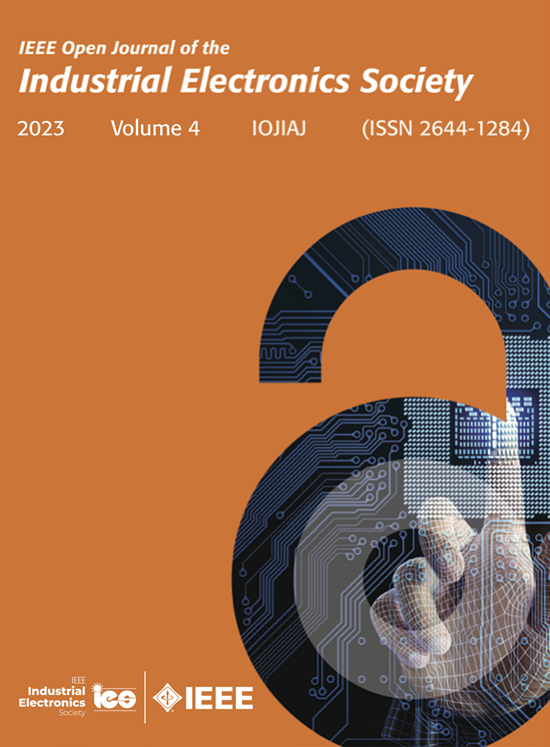一种用于水下无线充电系统的容差auv磁耦合器
IF 4.3
Q1 ENGINEERING, ELECTRICAL & ELECTRONIC
IEEE Open Journal of the Industrial Electronics Society
Pub Date : 2025-03-28
DOI:10.1109/OJIES.2025.3556244
引用次数: 0
摘要
在水下环境中,自主水下航行器(auv)在水下环境中得到了广泛的应用。为了避免水下无人潜航器的水面充电问题,近年来,磁性耦合器(MC)嵌入式坞站和水下无线充电水下无人潜航器备受关注。在本文中,我们提出了一种适用于水下无线充电应用的耐错位、轻型、auv功能的MC结构。通过所提出的设计,即使在各种类型的线圈错位情况下,MC也可以提供相对稳定的耦合。我们还提供了一种分析方法来估计所提出的MC在不同位置下的互感。利用ANSYS Maxwell软件对MC设计进行了仿真,评估了其在不同不对准情况下的性能。为了验证MC在感应功率传输系统中的可行性,在实验室中用MC设计构建了750-W无线充电实验样机。该系统的接收器重量轻,体积小,重量为320克,体积为110立方厘米,最高效率为93.1%。即使在不同线圈的轴向、旋转和偏离中心的情况下,测量的系统效率也超过92%。本文章由计算机程序翻译,如有差异,请以英文原文为准。
A Misalignment-Tolerant AUV-Capable Magnetic Coupler for Underwater Wireless Charging Systems
In the underwater environment, autonomous underwater vehicles (AUVs) have seen substantial use in the submarine environment. To avoid surfacing the AUV for recharging, magnetic coupler (MC)-embedded docking stations and AUVs for underwater wireless charging have attracted much attention in recent years. In this article, we propose a misalignment-tolerant, light-weighted, AUV-capable MC structure for underwater wireless charging applications. With the proposed design, the MC can provide a relatively stable coupling even under various types of coil misalignment. We also provide an analytical method to estimate the mutual inductance of the proposed MC under different positions. Simulations on the MC design are performed by using ANSYS Maxwell to evaluate its performance under different misalignment scenarios. To verify the viability of the proposed MC in an inductive power transfer system, a 750-W wireless charging experimental prototype was built in the laboratory with the proposed MC design. With a light-weighted and compact receiver of 320 g and 110 cm3, the system can achieve a maximum efficiency of 93.1%. Even under different coils’ axial, rotational, and off-center misalignment scenarios, the measured system efficiency is over 92%.
求助全文
通过发布文献求助,成功后即可免费获取论文全文。
去求助
来源期刊

IEEE Open Journal of the Industrial Electronics Society
ENGINEERING, ELECTRICAL & ELECTRONIC-
CiteScore
10.80
自引率
2.40%
发文量
33
审稿时长
12 weeks
期刊介绍:
The IEEE Open Journal of the Industrial Electronics Society is dedicated to advancing information-intensive, knowledge-based automation, and digitalization, aiming to enhance various industrial and infrastructural ecosystems including energy, mobility, health, and home/building infrastructure. Encompassing a range of techniques leveraging data and information acquisition, analysis, manipulation, and distribution, the journal strives to achieve greater flexibility, efficiency, effectiveness, reliability, and security within digitalized and networked environments.
Our scope provides a platform for discourse and dissemination of the latest developments in numerous research and innovation areas. These include electrical components and systems, smart grids, industrial cyber-physical systems, motion control, robotics and mechatronics, sensors and actuators, factory and building communication and automation, industrial digitalization, flexible and reconfigurable manufacturing, assistant systems, industrial applications of artificial intelligence and data science, as well as the implementation of machine learning, artificial neural networks, and fuzzy logic. Additionally, we explore human factors in digitalized and networked ecosystems. Join us in exploring and shaping the future of industrial electronics and digitalization.
 求助内容:
求助内容: 应助结果提醒方式:
应助结果提醒方式:


